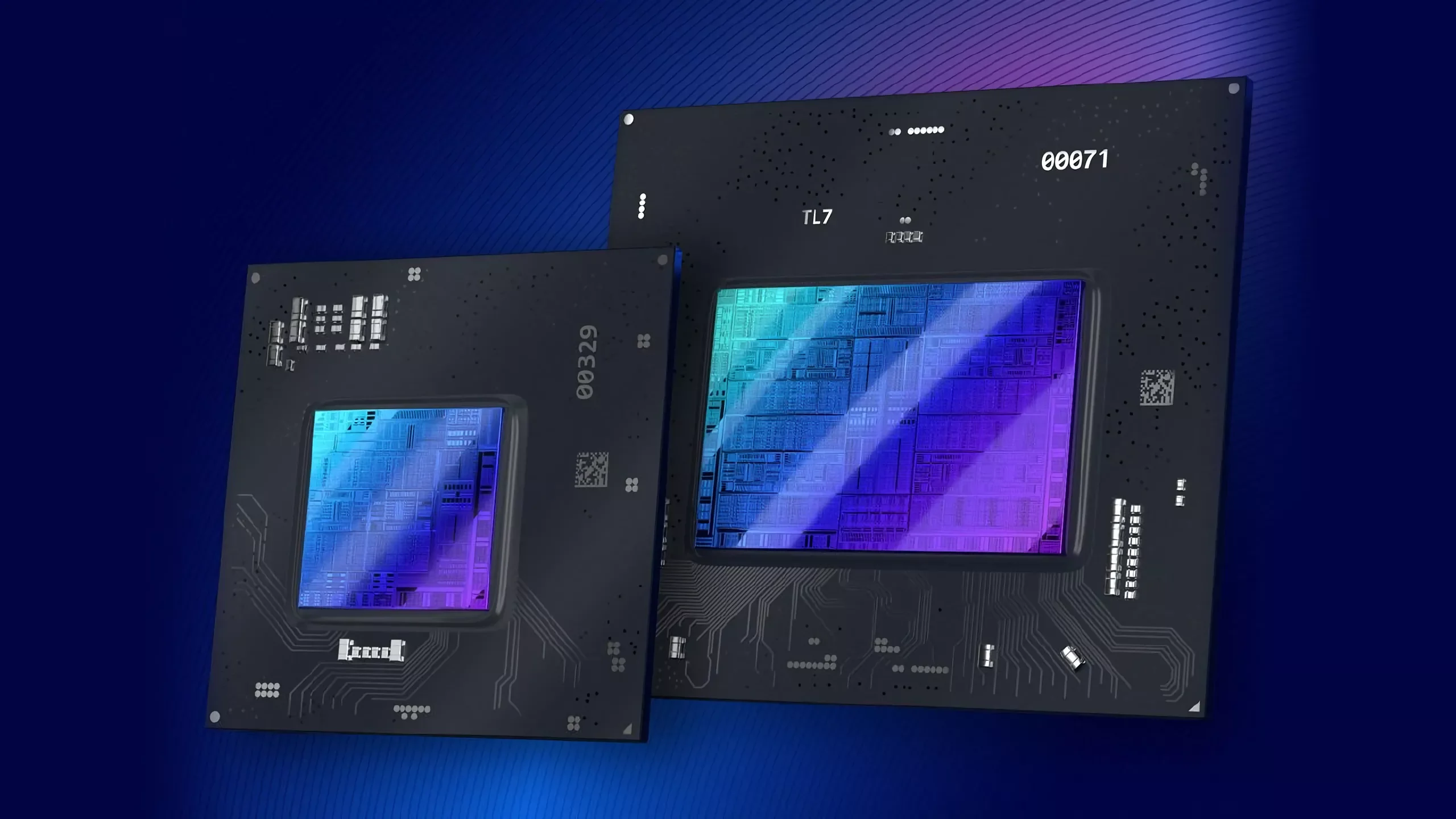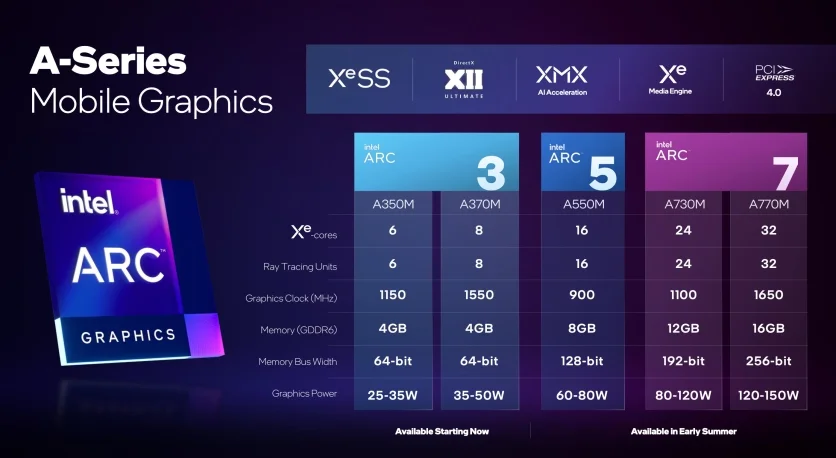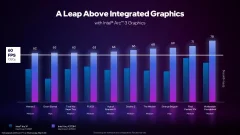Intel presented five mobile graphics cards with ray tracing

Intel held a big presentation of its products. Particular attention at the event was focused on laptop graphics cards with support for image scaling through artificial intelligence and ray tracing. The technologies are similar to those found in NVIDIA's RTX and are even available in budget devices.

The Intel Arc A line, built on the Xe HPG microarchitecture, is divided into three series: Arc 3, Arc 5 and Arc 7. Representatives of Arc 3 are designed for ultrabooks and will pull games in Full HD resolution. According to Intel representatives, the A370M graphics card with 4 gigabytes of GDDR6 VRAM is capable of delivering 60 frames per second in current single-player projects at medium graphics settings. In titles designed for eSports, the video card even shows 90 fps.
Although the model belongs to the budget, it has 8 Xe cores and eight ray tracing hardware units. The GPU clock speed here is 1550 MHz, and the power limit is 50 watts. The even more budget Arc A350M has the same amount of video memory with a reduced number of Xe cores, ray tracing units and a lower GPU frequency (1150 MHz).
Models of more powerful Arc 5 and 7 lines are not yet available for purchase. Arc A550M will receive 8 GB of VRAM, a 128-bit bus, twenty-four Xe cores and the same number of ray tracing units. The maximum power consumption of the video card is 80 W, however, the GPU frequency will be lowered in comparison with the models of the budget line. The flagship graphics adapter Arc A770M will get 32 Xe cores, 32 ray tracing units, 16 gigabytes of video memory (256-bit) and a power limit of 150 watts.
In addition, all laptop graphics cards support Xe SuperSampling technology, which is responsible for improving gaming performance by rendering frames at natively low resolution and then upscaling with the help of artificial intelligence. According to Intel, using this method will make it possible to play at 4K resolution without dropping fps. XeSS will begin to be implemented in already released games this summer.
Video cards will also support a list of Resizable Bar algorithms, which will enable the processor to access the full amount of VRAM at once. In addition, the new card models feature DeepLink technology, which combines the processing power of integrated and discrete Intel graphics to increase video encoding speed. According to the results of tests in Hardbrake, this combination functions 40% faster than when using integrated graphics.
Notebooks from various manufacturers with Arc A350M and A370M graphics cards are already available for purchase. Models with more powerful members of the Arc 5 and 7 lines will be available this summer.

The Intel Arc A line, built on the Xe HPG microarchitecture, is divided into three series: Arc 3, Arc 5 and Arc 7. Representatives of Arc 3 are designed for ultrabooks and will pull games in Full HD resolution. According to Intel representatives, the A370M graphics card with 4 gigabytes of GDDR6 VRAM is capable of delivering 60 frames per second in current single-player projects at medium graphics settings. In titles designed for eSports, the video card even shows 90 fps.
Although the model belongs to the budget, it has 8 Xe cores and eight ray tracing hardware units. The GPU clock speed here is 1550 MHz, and the power limit is 50 watts. The even more budget Arc A350M has the same amount of video memory with a reduced number of Xe cores, ray tracing units and a lower GPU frequency (1150 MHz).
Models of more powerful Arc 5 and 7 lines are not yet available for purchase. Arc A550M will receive 8 GB of VRAM, a 128-bit bus, twenty-four Xe cores and the same number of ray tracing units. The maximum power consumption of the video card is 80 W, however, the GPU frequency will be lowered in comparison with the models of the budget line. The flagship graphics adapter Arc A770M will get 32 Xe cores, 32 ray tracing units, 16 gigabytes of video memory (256-bit) and a power limit of 150 watts.
In addition, all laptop graphics cards support Xe SuperSampling technology, which is responsible for improving gaming performance by rendering frames at natively low resolution and then upscaling with the help of artificial intelligence. According to Intel, using this method will make it possible to play at 4K resolution without dropping fps. XeSS will begin to be implemented in already released games this summer.
Video cards will also support a list of Resizable Bar algorithms, which will enable the processor to access the full amount of VRAM at once. In addition, the new card models feature DeepLink technology, which combines the processing power of integrated and discrete Intel graphics to increase video encoding speed. According to the results of tests in Hardbrake, this combination functions 40% faster than when using integrated graphics.
Notebooks from various manufacturers with Arc A350M and A370M graphics cards are already available for purchase. Models with more powerful members of the Arc 5 and 7 lines will be available this summer.







There are no comments yet :(